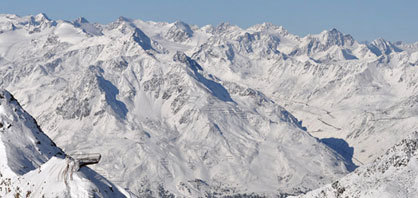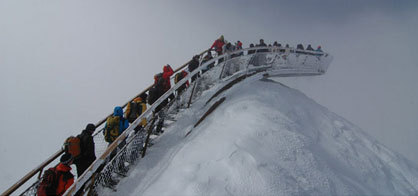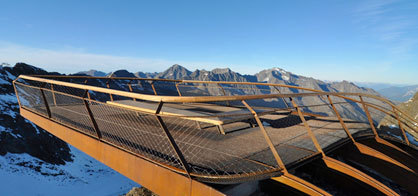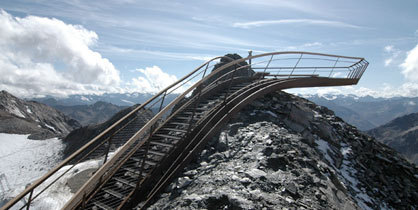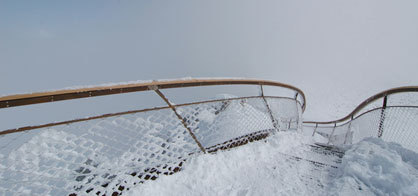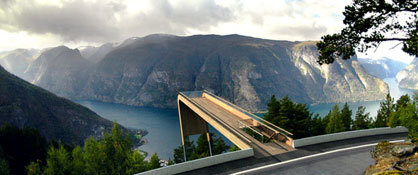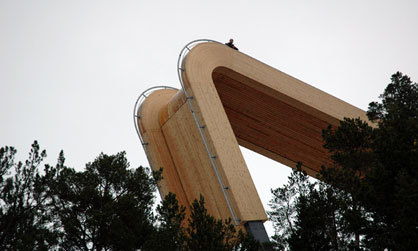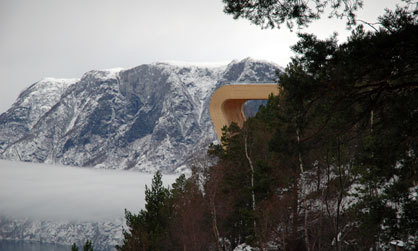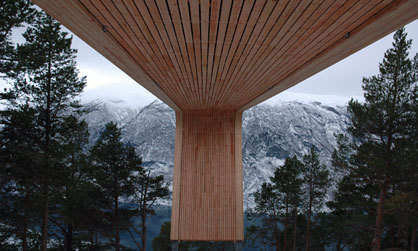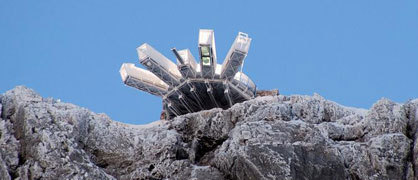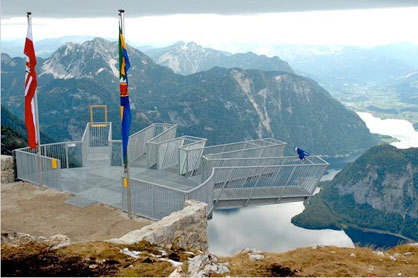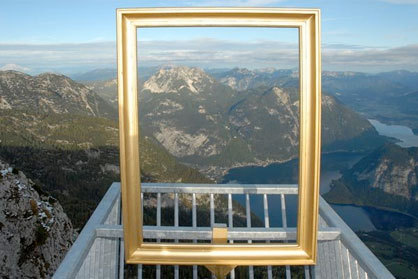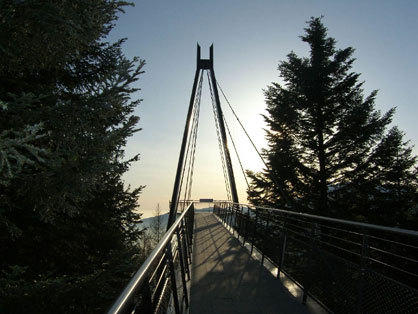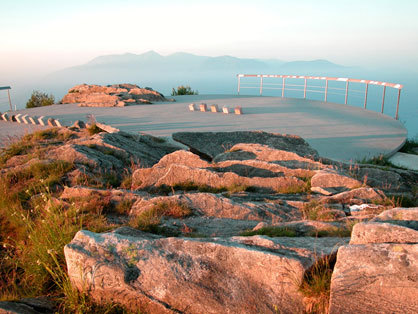Welcome to Vertigo
Text by NoéMie Schwaller
Zürich, Switzerland
22.12.08
Viewing platforms promise a very special kind of experience. However, in spite of the breathtaking views they provide, these spectacularly constructed platforms themselves are often not noticed.
Viewing platforms, many of them from a mountain peak, offer a view of a mountain panorama, a city or landscape, and promise a very special kind of experience. In spite of the breathtaking views they provide, these spectacularly constructed platforms themselves are often not noticed, however, even though many of them are well worth looking at. Designed to harmonise with the landscape, each influences the other. Here is a selection of some of the best:
Top of Tyrol
The viewing platform on the Stubaier glacier in Austria, designed by Katrin Aste and Frank Ludin from Aste Architecture, is a sketch in the snow, architecture as a tightrope walk. By incorporating the existing topography into the stage setting and imposing a sketch on it, the landscape is transformed into moulded architecture – an artificial landscape, operating between the dynamic and the static, between stasis and transformation. The track to the top and the platform itself are built into the brittle rock, and six months of the year most of the structure disappears under the snow. Only the weather-resistant steel section which projects nine metres beyond the ridge of the north wall remains visible all the year round.
The curving, monolithic steel structure is designed as a support grid, its shape transforming itself as ice and snow become attached to it during the extreme changes in the weather on the glacier. The base made of grating lies between the 50 cm high side supports, while the load is distributed locally via foundations and rock anchors on the cliff side. As part of the Stubaier wild water track, the platform is embedded into the peak of the Isidor mountain and provides a spectacular view of the glacier from 3200 metres.
Aurland Lookout
In May 2005 the architects Todd Saunders and Tommie Wilhelmsen won the competition for a viewing platform in Aurland, Norway. The project was part of the tourist routes planned by the Norwegian Department for Motorways.
The viewing platform is a seamless curve made of local wood and hangs over a fjord. The glass wall which protects visitors against the wind and ensures they don't fall over the side is hardly visible.
5 Fingers
In October 2006 the spectacular '5 Fingers' viewing platform (also called the 'World heritage view') opened in Austria. True to its name the platform protrudes from the cliff face in the shape of a hand, hanging 400 metres above ground level. Five different walkways, one of them made of glass and each of them sized four metres by one metre, provide spectacular views of the Hallstatt world heritage region, the Hallstättersee lake and the Salzkammergut area. The platform is the high point of the hiking trail on the Krippenstein plateau.
The frame to your picture is already set up. Foto: Keller
Grand Canyon Skywalk 2007
Thrills on the world's highest viewing platform: the glass, horseshoe-shaped bridge of the 'Skywalk' is suspended 1200 metres above the Colorado River at the western end of the Grand Canyon in the state of Arizona. Three metres wide and 45 metres in length, the 30-million dollar project was designed by David Jin. The special, low ferric-oxide glass alone weighs 28 tonnes and is so transparent that the colour patterns of the cliff face are not distorted.
The entire structure weighs over 480 tonnes and its massive supports are anchored several metres deep in the rock. 48 base plates are supported by a peach pink steel frame. The Skywalk is reported to be able to withstand wind strengths of up to 160 km an hour, or a Force 8 earthquake. The steel frame for the bridge was produced locally on rollers. David Jin says of his structure: "It was my vision to give visitors the impression that they are flying with the eagles."
The Landscape Promontory
As part of the Cardada Project, which is intended to revitalise the Cardada mountain in the Swiss region of Tessin and will be completed in 2010, Paolo Bürgi has built a suspended exhibition platform. This platform made of steel and titanium enables visitors to take a walk among the treetops. "A walkway leads to a viewing platform with a view of Lago Maggiore.
However, the view of the landscape will not be the only thing you enjoy as the observer: symbols integrated in the surface of the walkway and their explanations in the parapet are intended to create links with local history and literature. It's all about perception, sensibility, the mysterious, the invisible dimension – coming closer to the essence of the landscape." Paolo Bürgi, 2000. The project won first prize, the 'Rosa Barba Award', at the third European Landscape Biennale in Barcelona.
